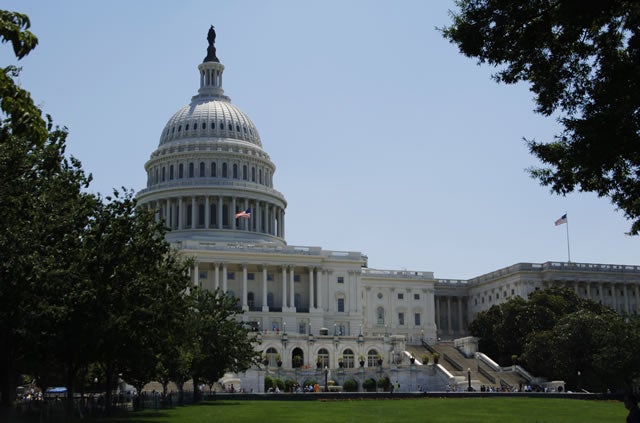Decade after decade, the federal role in education has grown. And decade after decade, this growth has failed to increase student achievement. The most recent reauthorization of the Elementary and Secondary Education Act of 1965—the bill now known as No Child Left Behind (NCLB)—further expanded Washington’s role in education by setting a ticking clock on states: Under NCLB, by 2014, all children must be proficient in reading and math while showing Adequate Yearly Progress (AYP) toward that goal.
AYP and the 2014 proficiency deadline sound like worthwhile goals—who wouldn’t want all children to be proficient in reading and math? But the dead hand of big government always carries with it unintended consequences. In this case, many states made their student outcomes less and less transparent and, in some cases, even watered down standards to make it appear that children were meeting Washington’s demands.
Now, a new proposal (actually, a series of five bills) in the Senate aims to “fix” NCLB. While NCLB gave states a federal pace (AYP) and deadline (2014) for when students had to be proficient on state standards and assessments, a new proposal introduced by four Senators last week would have Washington specifying the content that states should be using for their standards and tests.
Last Thursday, four Senators—Lamar Alexander (R–TN), Johnny Isakson (R–GA), Mark Kirk (R–IL), and Richard Burr (R–NC)—introduced a package of five bills that together comprise their proposal to “fix” No Child Left Behind (NCLB).
The primary bill—the Elementary and Secondary Education Amendments (ESEA) Act of 2011—continues to work within the confines of the existing NCLB framework and creates concern about further federal overreach into an area that is the domain of states and localities: standards, tests, and curricula.
The ESEA Amendments Act employs the Administration’s “college- and career-ready” standards language, the same language used by the Common Core initiative and the Obama Administration in its push to establish national standards and tests.
Specifically, the proposal would replace the AYP groundwork language to specify “that all children have a fair, equal, and significant opportunity to receive a high-quality education that prepares them for college and a career.”
The bills’ frequent references to “college- and career-ready” standards indicate they’re rolling right along with the terms used by the Common Core initiative and the Obama Administration to refer to national standards and tests for local schools.
The use of these terms in the ESEA amendments proposal opens the door for conditioning federal funding on a state’s willingness to adopt them. Senator Marco Rubio (R–FL) rightly voiced his concern about the national standards push earlier this week, writing:
I am concerned that the administration’s requirements for granting a waiver from NCLB would entail states having to adopt a federally-approved “college and career ready” curriculum: either the national Common Core curriculum standards, or another federally-approved equivalent…. Such activities are unacceptable.
While the Senators’ proposal may cut down the page-count of the current NCLB, it does so by replacing detailed legislative specifics with an increase in the Secretary of Education’s direct authority over state education accountability systems. States will submit to the Secretary their plan to overhaul their accountability systems in the absence of AYP. It must then be approved by a peer review board chosen by the Secretary of Education.
According to the bill language, “The peer review process shall be designed to promote effective implementation of college and career ready standards through State and local innovation; and provide transparent feedback to States designed to strengthen the State’s plans.”
Moreover, the proposals do not set the stage for a fundamental overhaul of Washington’s role in education. And after a half-century of failed federal intervention in local schools, this is the time for that overhaul.
That’s the kind of bold leadership House Education and the Workforce Committee chairman John Kline (R–MN) has shown. Kline says his goal is to downsize the federal footprint in education. His committee has taken significant steps in that direction by producing a series of proposals that eliminate ineffective and duplicative programs and give states flexibility to use $20 billion out of $25 billion in NCLB funding for educational priorities of their choice.
Rather than working within the confines of the existing NCLB while ceding new authority to Washington, as the Senate proposals suggest doing, the House approach is a good first step in ensuring the decades of Washington-centric education policy are not repeated, and it would make schools accountable to parents and taxpayers, not the federal government.
